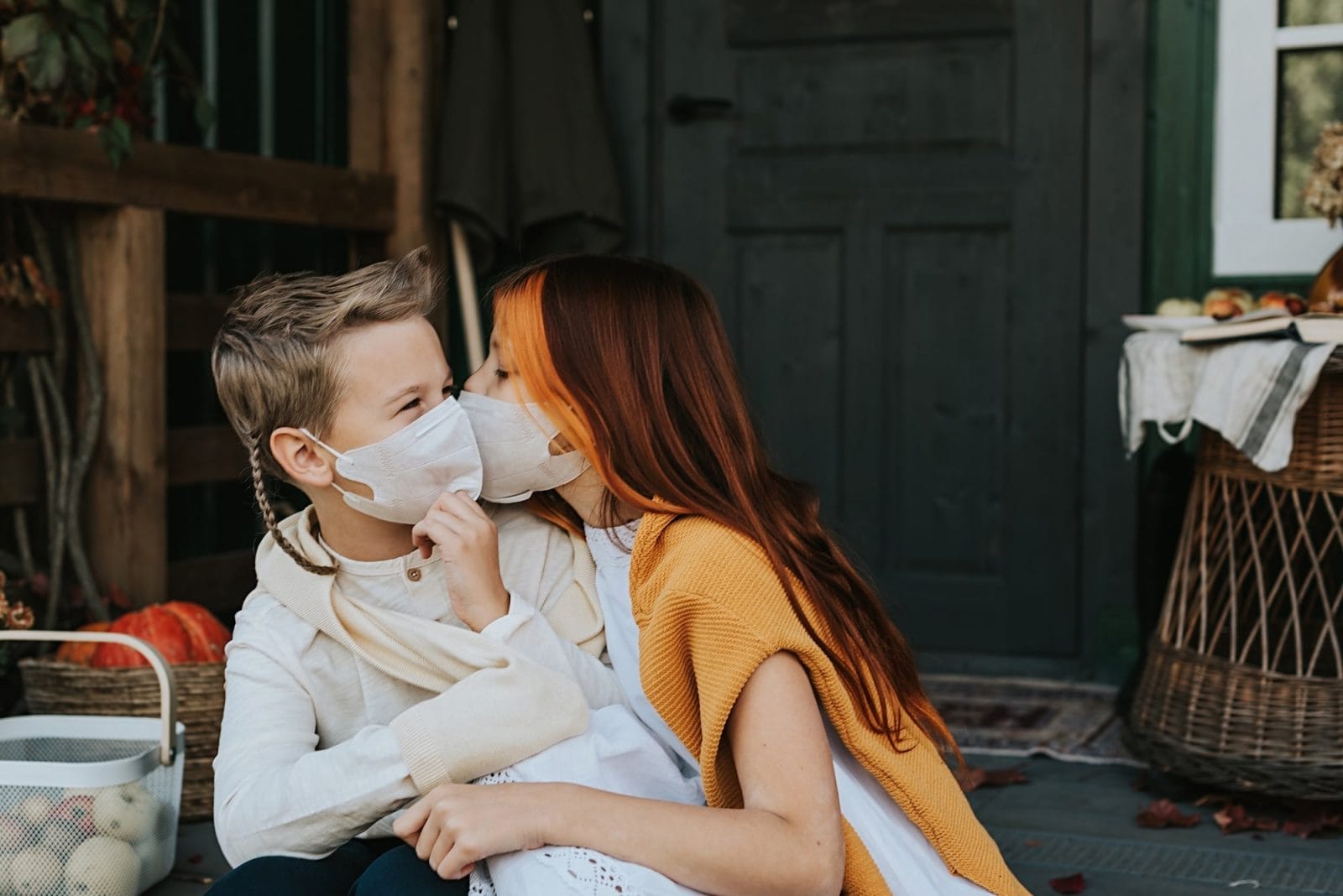Yes, you should wear a mask to Thanksgiving

If you're headed to a Thanksgiving gathering, experts say to mask up. Here's why.
Table of Contents
By now you’ve heard the news that the CDC and other public health experts including Dr. Anthony Fauci have urged Americans not to travel for Thanksgiving this year, and to enjoy the holiday with the people in your immediate household instead.
You’ve probably also heard that millions of Americans still plan to travel this week. Many families bought their tickets before the current surge in cases, hospitalizations and deaths across the country, and while airlines are offering vouchers and waiving change fees, it’s hard to say “see you next year” to thousands of dollars in travel expenses when many families are already feeling a cash crunch. Whether for budget reasons, for family reasons or just because canceling Thanksgiving felt like one disappointment too many in a difficult year, 63% of Americans still plan to see extended family members in person this Thanksgiving, according to a recent survey.
If you’re among the families planning to get together with others in-person for the holiday, you’re also probably aware of what health experts have suggested for keeping holiday gatherings as low-risk as possible. You’re keeping the windows open (or better yet, gathering outdoors), you’re keeping the gathering short and small, you’re keeping distance between tables and making sure everyone washes their hands.
But you might be wondering—do we really need to wear masks at Thanksgiving?
Health experts say yes. Here’s why.
As the CDC’s official Thanksgiving safety guidance notes, “Gatherings with more safety measures in place, such as mask wearing, social distancing and hand washing, pose less risk than gatherings where fewer or no preventive measures are being implemented.” It may feel awkward to have people wearing masks indoors and it may be tough to seat everybody far apart. But for the sake of safety, 2020 is the year to try.
As parenting expert and COVID researcher Emily Oster notes, the other really good reason to wear masks for Thanksgiving is that they work: Study after study has shown that wearing masks prevents the viral particles shed by asymptomatic but infected people from reaching other people and potentially infecting them as well. “We have a lot of evidence that people wearing masks is correlated with less COVID,” Oster writes.
Masks protect you as the wearer, but they also—even more importantly—protect the people around you. As infectious disease expert Kristin Englund writes for Cleveland Clinic, “Respiratory droplets aren’t spread solely by coughing and sneezing. They can be expelled by talking, singing, breathing heavily, laughing—you name it. That’s why it’s crucial to wear a face mask…You’re protecting those around you and also yourself.”
If you do attend or host a Thanksgiving gathering this year, it’s a good idea to follow as many of the below suggestions from the CDC as possible:
Keep masks on whenever possible, and while serving and preparing food. Wear a mask while preparing food for or serving food to others who don’t live in your household. All attendees should have a plan for where to store their mask while eating and drinking. Have one person who is wearing a mask serve all the food so that multiple people are not handling the serving utensils.
Keep people out of the kitchen. Limit people going in and out of the areas where food is being prepared or handled, such as in the kitchen or around the grill, if possible.
Don’t make it a potluck. Encourage guests to bring food and drinks for themselves and for members of their own household only; avoid potluck-style gatherings.
Use disposable plates, utensils and serveware. Use single-use options or identify one person to serve sharable items, like salad dressings, food containers, plates, utensils and condiments.
Wash hands. Make sure everyone washes their hands with soap and water for 20 seconds before and after preparing, serving and eating food and after taking the trash out. Use hand sanitizer that contains at least 60% alcohol if soap and water are not available. Designate a space for guests to wash hands after handling or eating food.
Maintain physical distance. Limit crowding in areas where food is served by having one person dispense food individually to plates, always keeping a minimum of a 6-foot distance from the person whom they are serving. Avoid crowded buffet and drink stations. Change and launder linen items (e.g., seating covers, tablecloths, linen napkins) immediately following the event.
Make clean-up extra-efficient. Offer no-touch trash cans for guests to easily throw away food items. Wash dishes in the dishwasher or with hot soapy water immediately following the gathering.
It’s disappointing to forego holiday traditions in a year that has already been full of disappointments. It’s understandable for families to want to see loved ones for Thanksgiving—that feeling of connection and continuity that the holidays inspire is important for the sake of our mental health, and we all need some self-care right now. But if you do choose to gather in-person instead of having Thanksgiving virtually this year, wearing masks whenever you’re not eating or drinking can help ensure that all of the sacrifices and changes we’ve already endured haven’t been for nothing—and help protect your precious family.


































